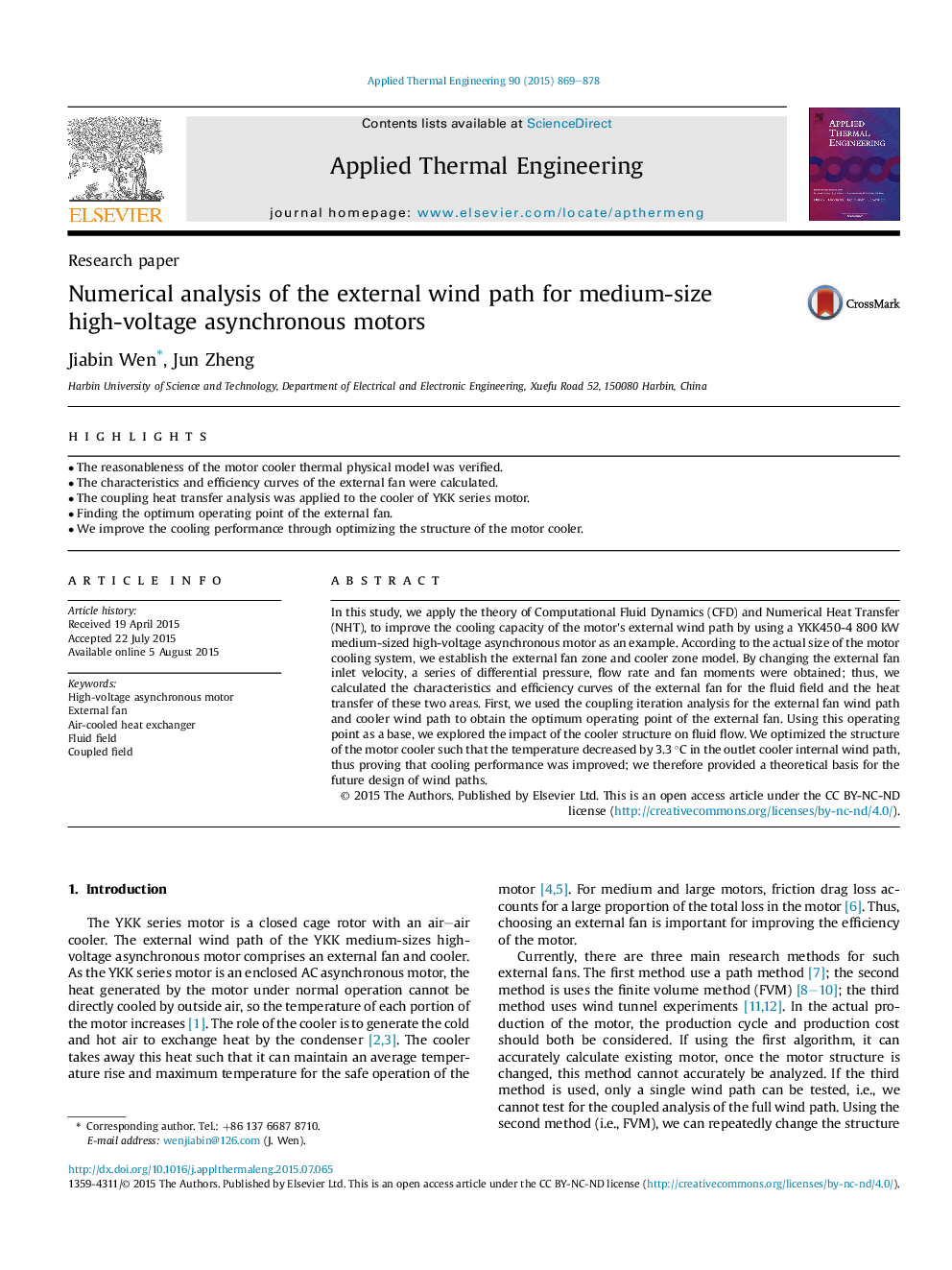| Article ID | Journal | Published Year | Pages | File Type |
|---|---|---|---|---|
| 7048897 | Applied Thermal Engineering | 2015 | 10 Pages |
Abstract
In this study, we apply the theory of Computational Fluid Dynamics (CFD) and Numerical Heat Transfer (NHT), to improve the cooling capacity of the motor's external wind path by using a YKK450-4 800 kW medium-sized high-voltage asynchronous motor as an example. According to the actual size of the motor cooling system, we establish the external fan zone and cooler zone model. By changing the external fan inlet velocity, a series of differential pressure, flow rate and fan moments were obtained; thus, we calculated the characteristics and efficiency curves of the external fan for the fluid field and the heat transfer of these two areas. First, we used the coupling iteration analysis for the external fan wind path and cooler wind path to obtain the optimum operating point of the external fan. Using this operating point as a base, we explored the impact of the cooler structure on fluid flow. We optimized the structure of the motor cooler such that the temperature decreased by 3.3 °C in the outlet cooler internal wind path, thus proving that cooling performance was improved; we therefore provided a theoretical basis for the future design of wind paths.
Related Topics
Physical Sciences and Engineering
Chemical Engineering
Fluid Flow and Transfer Processes
Authors
Jiabin Wen, Jun Zheng,
